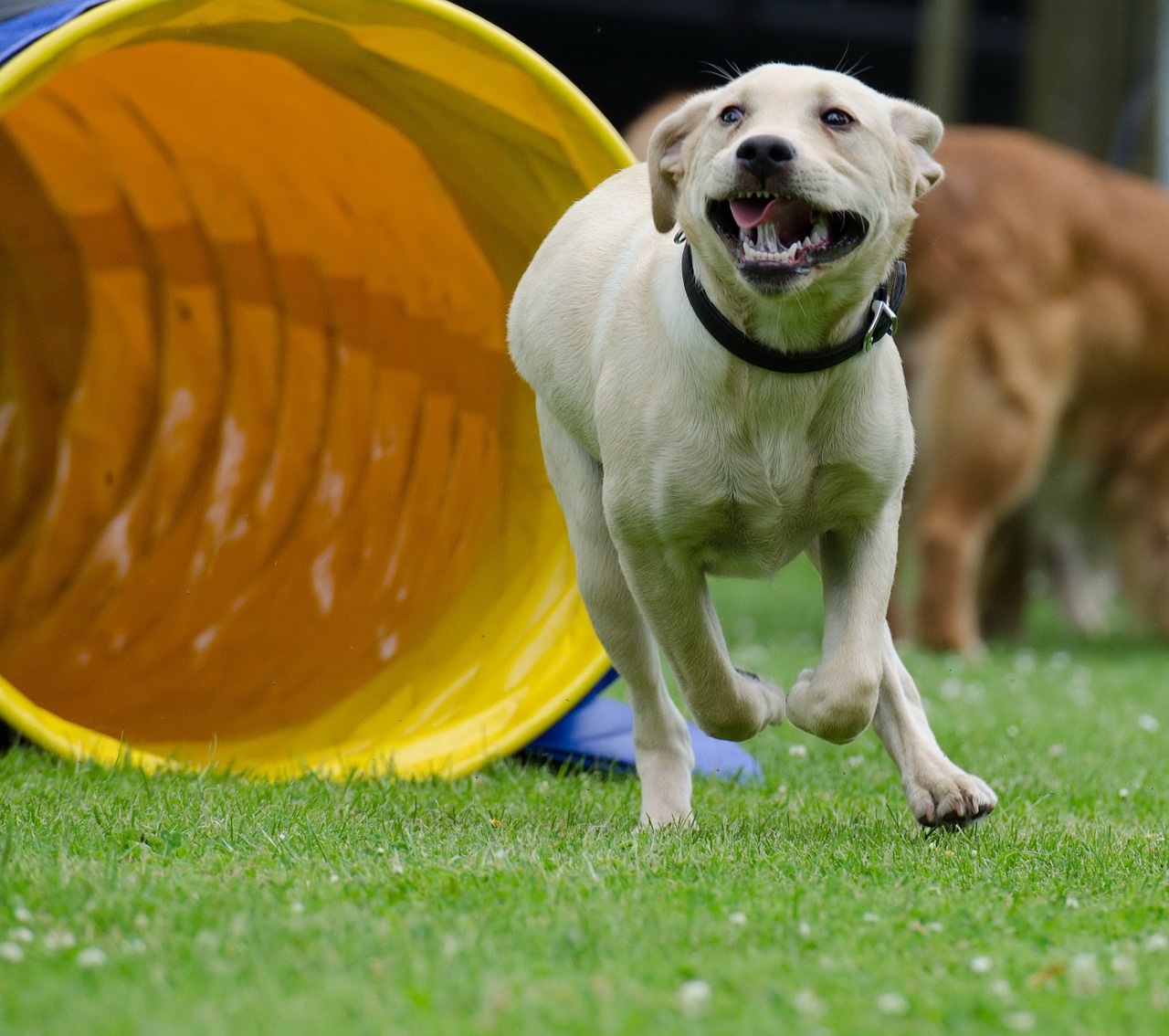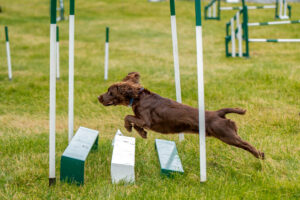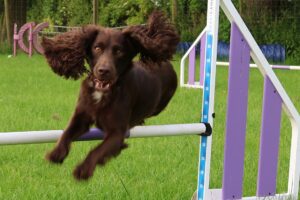
Dog Agility Training in Autumn
As autumn rolls in across the UK, bringing cooler temperatures and frequent rain, dog agility enthusiasts face new challenges in their outdoor training routines. However, with the right adjustments, autumn can be a fantastic time to enhance your dog’s agility skills while enjoying the vibrant seasonal landscapes. Here’s how you can make the most of this time of year and keep your dog safe and motivated in less-than-ideal weather conditions.
1. Warm Up Thoroughly
Just like humans, dogs need a proper warm-up before engaging in agility training, especially in cooler weather. A cold start can increase the risk of muscle strains or injuries. Begin with a brisk walk or light jog to get your dog’s blood flowing and muscles warmed up. You can also incorporate some basic obedience commands like sit, stay, and recall during this warm-up to mentally engage your dog before the more intense agility work begins.
2. Choose the Right Gear
With autumn’s unpredictable weather, ensuring your dog is comfortable and protected is key. A lightweight, waterproof dog coat can keep your dog dry and warm during training sessions. Look for one that doesn’t restrict movement and is easy to remove. Dogs should not be wearing coats while using the equipment.
3. Mind the Training Surface
Wet grass, mud, and fallen leaves can make outdoor training surfaces slippery and hazardous. Before starting, inspect the area for any particularly slick spots or hidden obstacles that could cause injury. Consider training on surfaces with better drainage, which remains firm underfoot even in wet conditions. If you usually train on grass, be mindful of reduced traction and adjust the intensity of your drills accordingly. Slower, more controlled movements can help your dog maintain balance and avoid slipping.
4. Adapt Your Obstacles
In wet weather, some agility equipment can become slippery, posing a risk to your dog. Make sure to check and, if necessary, dry off any equipment before use. Consider investing in equipment with non-slip surfaces. You might also need to modify some exercises, such as lowering jumps or focusing more on ground-based obstacles like tunnels and weaves, which are less affected by wet conditions. Make sure there is no frost on the equipment or ground, if possible, plan to train later in the day when the ground has softened.
5. Stay Visible and Safe
Autumn days are shorter, and your training sessions might overlap with early mornings or late afternoons when light is fading. Make sure both you and your dog are visible by using reflective gear. A reflective harness or collar, along with a clip-on LED light, can help ensure your dog is easily seen, even in dim light. Planning your sessions earlier in the day when there’s more natural light is another way to avoid training in potentially dangerous low-visibility conditions.
6. Keep Sessions Short and Sweet
Colder weather can tire your dog out more quickly, especially if they’re wet or cold. Keep an eye on your dog’s behavior and energy levels, and be prepared to shorten your training sessions if needed. Short, frequent sessions are often more effective than longer ones, particularly in less-than-ideal weather. This approach keeps your dog engaged and prevents them from becoming too cold or fatigued.
7. Dry Off and Warm Up Post-Training
After training in the wet and cold, it’s important to dry your dog off thoroughly. Use a towel to remove excess water from their coat and paws, paying special attention to their underbelly and legs. If your dog has a thicker coat, consider using a dog-safe hairdryer on a low setting to fully dry them off. Warming up with a cozy blanket or in a warm room can also help prevent them from getting chilled post-exercise.
8. Watch Out for Seasonal Hazards
Autumn brings specific outdoor hazards like wet leaves, which can be slippery, and fallen branches or conkers that could pose a risk if ingested. Be vigilant during your sessions, especially if training in wooded areas or parks. Clear any hazards from your training space before starting, and keep an eye on your dog to ensure they don’t pick up anything potentially harmful.
9. Maintain Motivation with Rewards
The colder weather might make your dog less enthusiastic about training, so keeping them motivated is key. Use high-value treats or favorite toys as rewards to maintain their interest and enthusiasm. Additionally, incorporate more play breaks during training to keep the experience fun and positive, reinforcing the idea that agility is something to look forward to, even when the weather isn’t perfect.
Conclusion
Autumn’s cooler, wetter weather in the UK might seem challenging for dog agility training, but with a few thoughtful adjustments, you and your dog can continue to enjoy and improve your skills together. By preparing appropriately, adapting your training routine, and keeping your dog comfortable and motivated, you can make the most of this beautiful season. So, embrace the crisp air, the colorful leaves, and the unique opportunities that autumn training brings, and watch your dog’s agility progress continue to grow.



